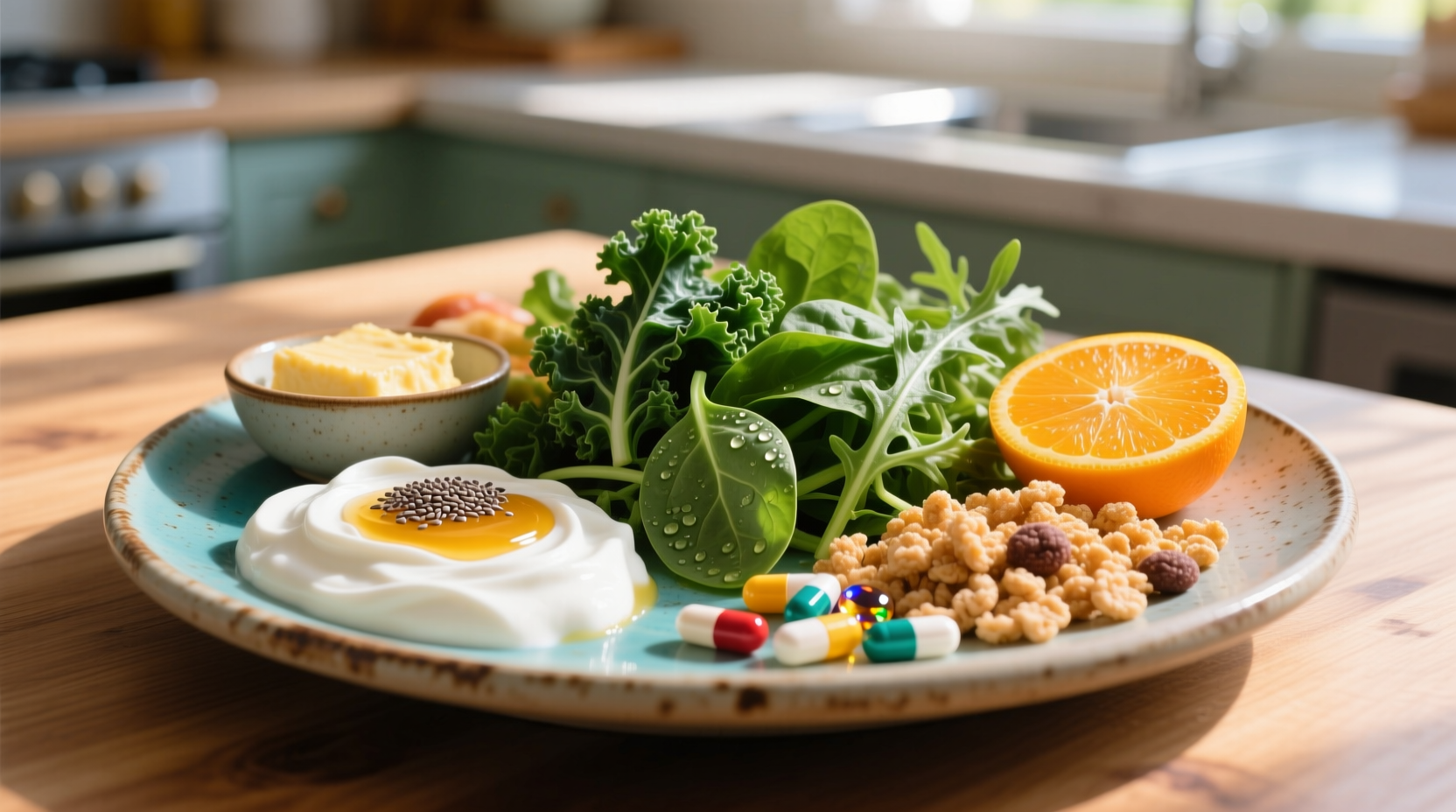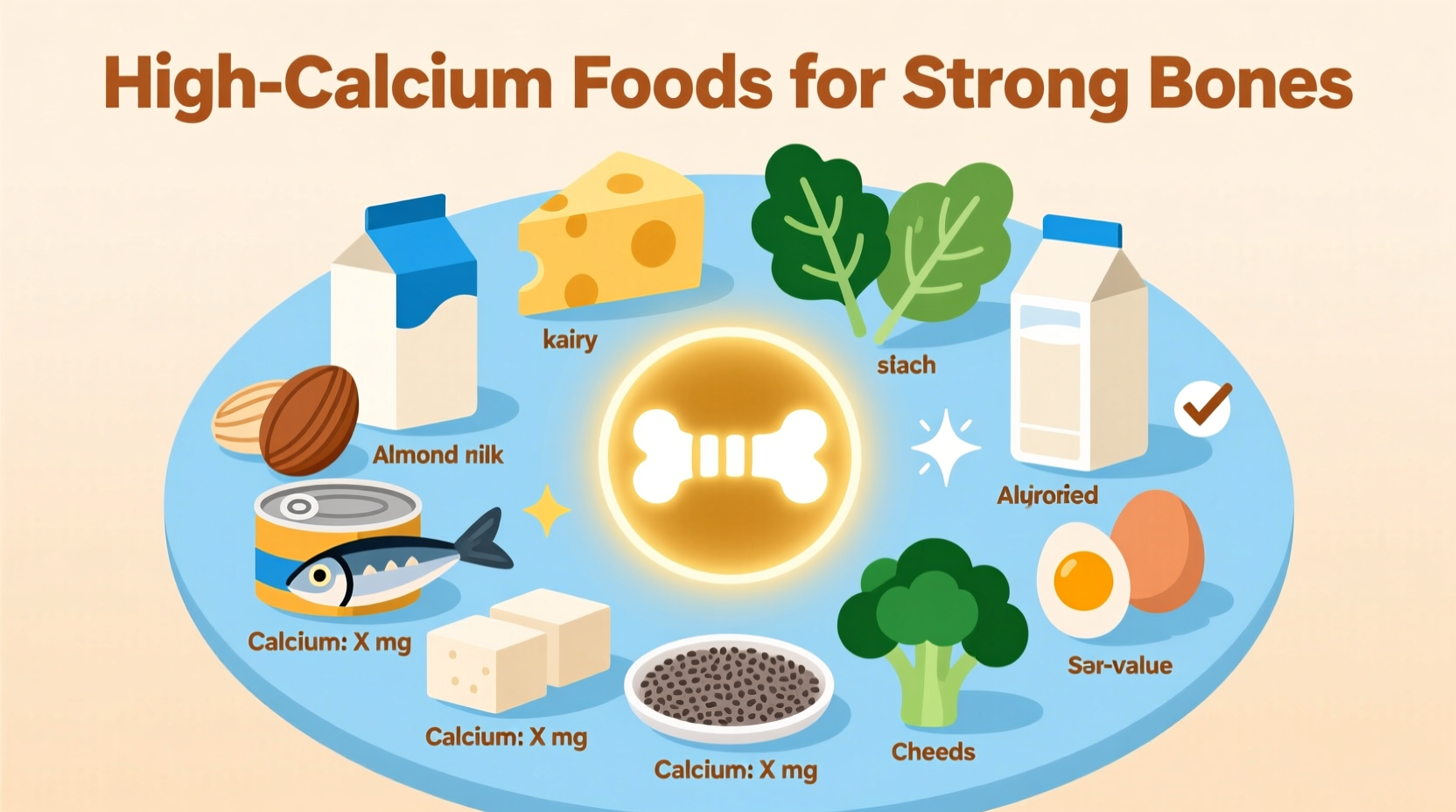The top calcium-rich foods include dairy products like milk (300mg per cup), yogurt (450mg per 8oz), and cheese (330mg per 1.5oz). Excellent non-dairy options are sardines with bones (325mg per 3oz), fortified plant milks (300mg per cup), tofu made with calcium sulfate (275mg per ½ cup), and leafy greens like kale (100mg per cup cooked). Adults aged 19-50 need 1,000mg daily, while women over 50 and men over 70 require 1,200mg for optimal bone health.
Why Calcium Matters for Your Health
Calcium isn't just about strong bones—it's essential for muscle function, nerve transmission, and blood clotting. According to the National Institutes of Health, inadequate calcium intake increases osteoporosis risk, with 10 million Americans already affected by this bone-thinning disease. The body can't produce calcium naturally, so dietary sources become critical throughout all life stages.
Your Daily Calcium Requirements
Daily calcium needs vary significantly by age and gender. The Institute of Medicine recommends:
| Age Group | Daily Calcium Requirement | Special Considerations |
|---|---|---|
| Children 4-8 years | 1,000 mg | Critical for bone development during growth spurts |
| Teens 9-18 years | 1,300 mg | Highest requirement period for bone mass accumulation |
| Adults 19-50 years | 1,000 mg | Maintains bone density and supports bodily functions |
| Women 51+ years | 1,200 mg | Compensates for reduced absorption during menopause |
| Men 71+ years | 1,200 mg | Addresses age-related absorption challenges |
Top Calcium Sources by Food Category
Dairy Powerhouses
Dairy remains the most bioavailable calcium source, with absorption rates around 30%. A single cup of milk provides 300mg (23% of daily value), while plain yogurt offers even more at 450mg per 8-ounce serving. Hard cheeses like cheddar deliver concentrated calcium—just 1.5 ounces contains 330mg. For those with mild lactose intolerance, aged cheeses and Greek yogurt often cause fewer issues due to lower lactose content.
Plant-Based Calcium Champions
For dairy-free diets, these foods deliver impressive calcium content:
- Tofu made with calcium sulfate: 275mg per ½ cup (check labels as processing methods vary)
- Fortified plant milks: Typically 300mg per cup (almond, soy, oat)
- Collard greens: 266mg per cooked cup (best when paired with vitamin D)
- Almonds: 75mg per ¼ cup—also provides healthy fats
- Chia seeds: 179mg per ounce—excellent for smoothies and puddings
Seafood and Bone-In Options
Sardines and canned salmon with edible bones are nutritional powerhouses. A 3-ounce serving of sardines provides 325mg of calcium—nearly one-third of your daily needs. These fish also deliver vitamin D, which enhances calcium absorption. When selecting canned fish, look for varieties packed in water rather than oil for lower calorie content.
Fortified Foods and Beverages
Many everyday products now come fortified with calcium. Orange juice typically contains 300mg per 8-ounce serving, while some breakfast cereals provide up to 1,000mg per serving. Always check nutrition labels as fortification levels vary significantly between brands. The USDA FoodData Central database confirms that fortified foods have become increasingly important calcium sources, particularly for plant-based diets.
Maximizing Calcium Absorption: What Most Guides Don't Tell You
Simply consuming calcium-rich foods isn't enough—your body absorbs only 20-30% of dietary calcium. Several factors influence absorption:
Absorption Enhancers
- Vitamin D: Consuming calcium sources with vitamin D (like fortified milk or fatty fish) boosts absorption by up to 65%
- Moderate portions: Your body absorbs calcium best in doses under 500mg at a time
- Acidic environment: Pairing calcium with lemon juice or vinegar improves uptake
Absorption Inhibitors
- Oxalates: Found in spinach and beet greens, these compounds bind calcium (spinach provides just 5% absorbable calcium despite high content)
- Phytates: Present in whole grains and legumes, they can reduce absorption by 20-30%
- Excess sodium and caffeine: Increase calcium excretion through urine
Special Dietary Considerations
For Lactose-Intolerant Individuals
Many assume dairy elimination means calcium deficiency, but strategic planning yields excellent results. Lactose-free milk products maintain full calcium content while removing the problematic sugar. Fermented dairy like kefir often causes fewer issues due to beneficial bacteria that break down lactose. The National Osteoporosis Foundation confirms that well-planned lactose-free diets can meet calcium needs through diverse food sources.
Vegan Calcium Strategies
Vegans need to be particularly strategic. Combine calcium-rich foods with vitamin D sources—try fortified plant milk with mushrooms exposed to sunlight. Soaking and sprouting beans reduces phytate content, improving calcium availability. Include seaweed varieties like wakame (126mg per cup) and hijiki (1,400mg per dried ounce) for concentrated plant-based calcium.
Age-Specific Needs
Children building bone mass benefit from calcium-rich snacks like cheese sticks and fortified cereals. Postmenopausal women should prioritize consistent calcium intake throughout the day rather than large single doses. Older adults often need supplementation alongside dietary sources due to reduced absorption efficiency—consult your healthcare provider for personalized recommendations.

Practical Daily Calcium Plan
Here's how to reach 1,000mg of calcium through whole foods:
- Breakfast: Fortified oatmeal (300mg) with chia seeds (179mg)
- Lunch: Tofu stir-fry with bok choy (268mg)
- Snack: Almond milk smoothie with kale (300mg)
- Dinner: Sardines with collard greens (425mg)
Total: 1,472mg—well above the daily requirement while providing diverse nutrients.
When Food Isn't Enough: Supplementation Guidance
While food sources are preferable, supplements become necessary when dietary intake falls short. Calcium citrate offers better absorption than carbonate, especially for those with reduced stomach acid. Never exceed 500mg per dose, and take supplements with food for optimal uptake. Consult your healthcare provider before starting supplements, as excessive calcium intake can increase kidney stone risk and interfere with certain medications.
Frequently Asked Questions
Which vegetable has the highest calcium content?
Collard greens provide the highest calcium among common vegetables with 266mg per cooked cup. Other excellent options include bok choy (158mg per cup), kale (100mg per cup cooked), and broccoli rabe (100mg per cup cooked). Note that spinach contains calcium but its high oxalate content limits absorption to just 5%.
How can I get calcium without dairy products?
Non-dairy calcium sources include fortified plant milks (300mg per cup), calcium-set tofu (275mg per ½ cup), canned sardines with bones (325mg per 3oz), almonds (75mg per ¼ cup), and leafy greens like collard greens (266mg per cup cooked). Combining these throughout the day easily meets daily requirements when planned strategically.
Does cooking affect calcium content in foods?
Cooking generally preserves calcium content, but preparation methods matter. Boiling calcium-rich greens like spinach causes some calcium to leach into water, though the remaining calcium becomes more bioavailable as cooking breaks down oxalates. Steaming preserves more nutrients than boiling. For maximum benefit, consume cooked greens with a vitamin D source like fortified plant milk.
What's the difference between calcium absorption from plant vs animal sources?
Dairy calcium has approximately 30% absorption rate, while plant-based sources range from 5-60% depending on compounds present. Low-oxalate greens like kale and broccoli have absorption rates around 50-60%, comparable to dairy. High-oxalate plants like spinach have only 5% absorption. Fortified plant milks typically match dairy's 30% absorption rate. Pairing plant calcium with vitamin C enhances absorption.











 浙公网安备
33010002000092号
浙公网安备
33010002000092号 浙B2-20120091-4
浙B2-20120091-4